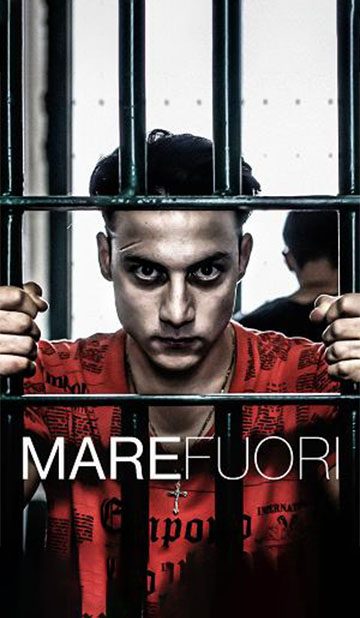
Mare Fuori
- Cava De' Tirreni, Rione Sanità, Villa Doria D'Angri, Via Toledo, Via Posillipo, Via Petrarca, Via Orazio, Via Dei Tribunali, Stazione Metro Toledo, Salerno, Quartieri Spagnoli, Centro Direzionale Napoli, Porto di Salerno, Piazza Del Plebiscito, Napoli, Montesanto, Ischia, Gianturco, Fuorigrotta, Corso Vittorio Emanuele, Villa Grottamarina Città: Caserta
- Caserta, Cava De' Tirreni, Ischia, Napoli, Salerno
- Drama, Romantic, Teens, TV Series
- Carmine Elia
- Anna Ammirati, Antonio Orefice, Ar Tem, Carmine Recano, Carolina Crescentini, Giacomo Giorgio, Massimiliano Caiazzo, Nicolas Maupas, Valentina Romani, Vincenzo Ferrera
- Roberto Cimatti
- Stefano Lentini
- Giuliana Cau (1ª stagione) Daniela Salernitano
- Rai 2
Synopsis
The protagonists of “Mare fuori” are the boys of the Penal Institute for Minors in Naples. It is here that the protagonists become adults, forced to face prison and its laws, but also the fear of leaving out, together with the sea, even their dreams. To support the boys in their journey, there are the director of the prison Paola (Carolina Crescentini) and the commander Massimo (Carmine Recano), who with energy, heart and discipline help them to keep their aspirations alive. “Mare fuori” is a positive story, which tells of friendship, love, dreams and emotions. A curiosity: the evocative setting of the prison has been completely rebuilt at the Navy base of the San Vincenzo pier, thanks to the work of the scenography department of the entirely Campania series, led by the scenographer Antonio Farina.
Create your own Custom Trailer
Insights and curiosities: the music
NOTE FROM THE COMPOSER – Stefano Lentini
“The music of Mare Fuori is the fruit of three parallel stories. With Carmine (the director) I immediately discussed the three musical worlds that characterize the narration. The first, diegetic music : twenty-six scenes in which the protagonists play the piano. The virtuoso pianism of Filippo, an academic and brilliant pianist, and the magnetic and improvised one of the talented Naditza. We decided to work entirely on an original repertoire created specifically to invent Filippo’s “classical” music and Nad’s most popular music. For Filippo I was inspired by Frederic Chopin, the composer I absolutely love the most, for Naditza we avoided the natural association with gypsy music to go in a direction closer to minimalism. The idea was to remain elegant, touching, poignant. The second musical world is that of “trap / rap” music , the music of the boys in prison. Here too the decision was to invent “our” rap, without following the fashions of the moment or the beats in vogue. I worked on the basics which I then shared with Raiz who wrote some beautiful lyrics and melodic lines. Thus were born “Mare Fuori”, “Ddoje Mane” and “Tic Toc (It didn’t go like this)”, which are stories within history . Each tells different moments and different characters: Carmine’s rebellion against the underworld system, Ciro’s drama.
Finally, the so-called commentary music : the most important element was born from an intuition of the director who suggested that I listen to a piece by Gabriel Faurè for children’s choir, from here it is the idea was born of associating the bloodiest dimension of history with music that could raise the inner drama of each character bringing it to an almost sacred level. Thus was born the idea of proceeding in counterpoint on pain, on the bloody scenes: I worked with the White Voice Choir of Barcellona Pozzo di Gotto , a phenomenal choir of children and young people who gave so much to the color of this soundtrack. Another of the cardinal themes “Requiem del Mare” was born from the bouzuki, the Greek instrument played by Mauro Pagani in the magnificent De Andrè album “Crêuza de mä”.

